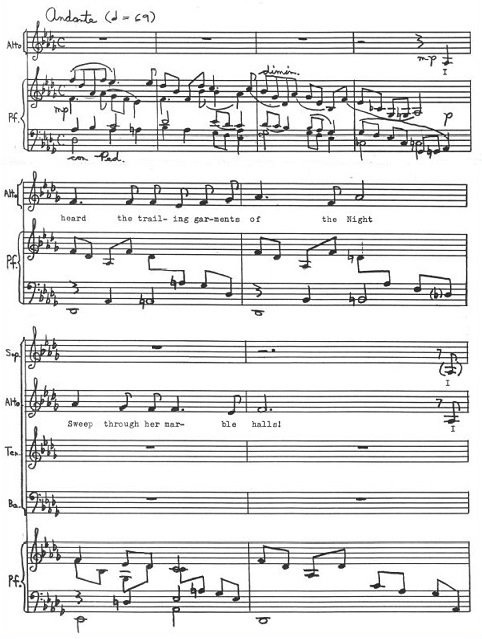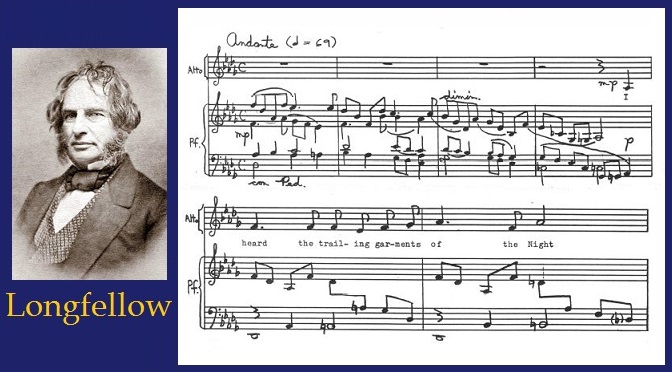Hymn to the Night
In 1984, I was directing a small amateur mixed chorus in Atlanta, Georgia. Wanting to take advantage of the opportunity to compose some choral music, I searched for poetic texts that might be suitable to my musical style. I settled on the poem “Hymn to the Night” by the American poet Henry Wadsworth Longfellow (1807-1882). The first of its six four-line stanzas is shown below.

I composed a simple SATB setting of this beautiful poem for the group.

The piece opens with a four-bar introduction in the piano accompaniment, after which the altos enter with the first two lines, the sopranos join in for the next two, and then the rest of the chorus joins in at the second stanza.
The singers delighted in the new composition and rehearsed it well. We prepared it along with several other engaging works for an upcoming program.
On the night of the concert, unfortunately, a major lightning storm struck the area, causing a widespread power outage. A large audience had gathered in the lobby, but we had only dim emergency lighting. Because of fire regulations, we could not allow the audience to enter the auditorium. In order to satisfy the crowd while we were waiting for the power to come back on, the manager of the chorus asked me to go down to the piano in the auditorium to play a few pieces I had under my fingers at the time — as best as I could manage on a barely visible keyboard, Stevie Wonder being unavailable. If you have never attempted to play Chopin’s “Winter Wind” etude under conditions of semi-darkness, I can testify that it is a challenge.
Alas, the power never did come back on that evening, and we had to cancel the concert. As it turned out over the course of subsequent events, my setting of Longfellow’s poem remains unperformed to this day. Ever since that evening, I have contemplated the amusing irony that the “Hymn to the Night” was ultimately defeated by darkness.
Currently, the score remains in its original handwritten form as shown here, along with typed-in words. I would still dearly love to see it performed, and eventually, I will produce a modern Finale score for it in order to increase the likelihood of that. Having been designed for an amateur chorus, the “Hymn to the Night” does not impose great challenges for either the singers or the accompanist. (Even the accompanimental part was designed for a less experienced pianist, since I was directing the chorus myself.) Since the parts split later in the work, at least eight singers (2 sopranos, 2 altos, 2 tenors, and 2 basses) are required. According to a notation I put in the old score, its duration is only about four minutes.

